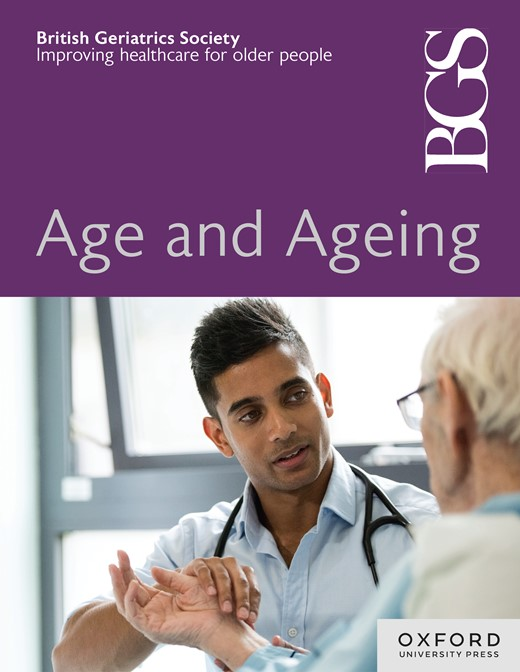3013以社区为基础的急性谵妄护理新方法
IF 6
2区 医学
Q1 GERIATRICS & GERONTOLOGY
引用次数: 0
摘要
背景目前治疗急性谵妄的做法是谵妄消退后入院,通常包括多次转院,但转院效果不佳。这个项目挑战了这种做法,允许人们在家里恢复,每天最多6个电话,由接受过谵妄训练的护理人员负责。结果先前对路径2床位谵妄患者的审计结果显示,谵妄患者预后差,永久性护理安置水平高,住院时间长(21天)。共有192次谵妄路径治疗,80%来自医院病房,20%来自社区环境。在2023年,42%的老人没有持续的社会护理支持需求,21%的老人只需要持续的居家护理需求。2.6%进入长期护理,再入院率保持在当地20-30%的水平。对夜间看护的需求一直很低。平均停留时间为15天。出院时谵妄症状明显改善并保持改善;出院前4AT评分中位数为7分,第一次通路评估(一般为回家后24小时内)4AT评分中位数为2分,通路出口4AT评分中位数为1分。患者和护理人员报告说,出院之家感到安全,家是康复的最佳场所:89%的患者和76%的护理人员认为回家是安全的;94%的患者;93%的护理人员认为家是康复的最佳场所。结论:该途径表明,急性谵妄患者出院后接受支持性家庭护理是安全、有效的,并减少了长期护理的入院率。本文章由计算机程序翻译,如有差异,请以英文原文为准。
3013 A new community-based approach to the care of acute delirium
Background Current practice for acute delirium presentation is hospital admission whilst the delirium resolves, often including multiple transfers with poor outcomes. This project challenges this practice and allows people to recover at home with a maximum of 6 calls a day and night with carers trained in delirium. Results From a previous audit of Pathway 2 beds patients with delirium had poor outcomes, high levels of placement in permanent care and long lengths of stay (21 days). There have been 192 episodes of care through the Delirium Pathway. 80% were from hospital wards and 20% stepped up from community settings. In 2023, 42% had no ongoing social care support needs and 21% had only the requirement of ongoing domiciliary care needs at home. 2.6% entered long term care with the re-admission rate remaining within the local rate for this cohort of 20–30%. There has been low demand for night care. The average LoS is 15 days. Delirium symptoms significantly improved at discharge and stayed improved; pre-discharge the median 4AT score was 7, at first pathway assessment (generally within 24 hours of arrival home), the median 4AT score was 2 and at exit of pathway the median 4AT score was 1. Patients and carers reported that the discharge home felt safe and that home was the best place for recovery: 89% of patients and 76% of carers felt it was safe to return home; 94% of patients; and 93% of carers felt that home was the best place for recovery. Conclusion This pathway has demonstrated that discharging patients with an acute delirium with supportive home care is safe, effective, and reduces admissions to long term care.
求助全文
通过发布文献求助,成功后即可免费获取论文全文。
去求助
来源期刊

Age and ageing
医学-老年医学
CiteScore
9.20
自引率
6.00%
发文量
796
审稿时长
4-8 weeks
期刊介绍:
Age and Ageing is an international journal publishing refereed original articles and commissioned reviews on geriatric medicine and gerontology. Its range includes research on ageing and clinical, epidemiological, and psychological aspects of later life.
 求助内容:
求助内容: 应助结果提醒方式:
应助结果提醒方式:


